Stooped posture
What is a stooped posture?
A stooped posture reduces the ability to take deep breaths, which impacts the ability to speak clearly and loudly. A stooped posture also eases eye contact. Stooped posture makes the muscles in the front of the body not more or less flexible and the muscles in the back of the body weaker. A Stooped posture does not just look unsightly, it can be detrimental to people’s health.
For instance, if the spine’s natural curvature is out of whack, people might experience back pain or neck pain – a few things most smartphone users can relate to. people also run the risk of losing the flexibility that’s required to carry out everyday tasks such as getting dressed or getting up out of the chair. Worse, however, poor posture can affect people’s balance and make them more prone to falls.
Poor posture in childhood, like slouching, leaning back in chairs, and carrying heavy schoolbags, can lead to the ligaments and muscles that support the vertebrae stretching. This could pull the thoracic vertebrae out of their normal position, resulting in kyphosis. A few experts also suggest trying yoga or tai chi, as these exercises emphasize keeping a straight posture. Another exercise to try involves lying on their stomach and lifting their head and shoulders off of the ground for a few seconds. This will strengthen the muscles in the upper back to prevent stooping. A raised front-to-back curve of the spine is called kyphosis. Kyphosis is an exaggerated, forward rounding of an upper back. In older individuals, kyphosis is frequently due to weakness in the spinal bones that leads to them compressing or cracking.
If all this talk of posture-related health issues has got people feeling nervous, stop and take a breath. Oh, that’s right; a stooped posture reduces the intake of oxygen, making it difficult to breathe deeply. Bear in mind, having a bad posture could be harmful. The imbalances in the muscles and the ligaments as a product of having poor alignment could result in different problems such as:
- Chronic back, neck, and shoulder pain
- Foot, knee, hip, and back injuries
- Headaches
- Stiffness
- Fatigue
- Muscle atrophy and weakness
- Difficulty breathing
- Digestion issues
- Impingement and nerve compression
- Sciatica
- Carpal tunnel syndrome
Posture changes may happen without the brain’s automatic reminders to stand up straight. These changes may include stooped or rounded shoulders, reduced low back curve, or forward lean of the head or whole body, making people look hunched over. Many factors can lead to changes in posture:
- Muscle stiffness or rigidity
- “Off” time, when the medications are not working as well
- When people have been in one position for too long
- If people are concentrating on other activities (such as walking or working at the computer)
It is important to try to keep an upright posture because a stooped posture can have another negative effect:
- Neck or back pain can happen when natural spine curves are out of alignment.
- A stooped posture decreases the ability to take deep breaths, which impacts the ability to speak clearly and loudly.
- A stooped posture also decreases eye contact. Combined with other Parkinson’s symptoms such as low voice volume and facial masking, this can have a big impact on the ability to communicate.
- Loss of flexibility from changing posture can make it hard to do many small movements in the day, such as raising arms overhead while getting dressed or getting up out of a chair.
- Poor posture can put people off balance and lead to falls.
What is posture?
Posture is defined as holding the body erect against gravity while in an upright, lying down, or sitting position. Good posture, on the other hand, pertains to training your body to walk, stand, sit, and lie with the slightest strain on the ligaments and muscles. Having good posture can help people feel great, feel more active and show confidence. It also helps control injury and the happening of pain. For individuals with poor posture, achieving good posture can be difficult, A few times even impossible. That is because developing good posture entails not only learning new moves and positions but also altering life-long habits
Posture is how people hold their bodies. There are two types: Dynamic posture is how people hold themselves when they are moving, like when you are walking, running, or bending over to pick up something. Static posture is how people hold themselves when they are not moving, like when they are sitting, standing, or sleeping.
Normal posture. An ear should line up with the middle of the shoulder. Both the upper back and lower back should be straight. Slight curves in the small of the back and at the shoulder blades are normal. The hips require to be in good alignment with the shoulders and the knees.
The types of spine curvature disorders.
- Lordosis/Swayback: the spine of an individual with lordosis curves significantly inward at the lower back. Lordosis is excessive curvature in a lumbar portion of the spine, which gives a swayback appearance. A spine is divided into many sections. The cervical vertebrae make up the neck. Thoracic vertebrae comprise a chest section and have ribs attached.
- Kyphosis: Characterized by an abnormally or not normally rounded upper back (more than 50 degrees of curvature).
- Scoliosis: Scoliosis leads to a sideways curve in the spine.
Posture Change With Age
A friend recently asked people if it was normal to become less upright as one ages. The answer is yes, people can expect to be more stooped as they age. people also can expect to lose height and change their gait (walking.) From about age 30 onward, there are gradual changes that take place in men and women. Height is lost in all men and women of those ages. On average a person will lose about half an inch of height every ten years from their peak height. A loss in height becomes more pronounced after the age of seventy. All of this is normal aging.
Why Does Our Posture Change With Age?
- Many factors predispose us to have altered posture as people age and each will be considered. But before mentioning every factor, it is important to know that the bones, the muscles, and the joints are all part of the musculoskeletal system that defines posture. The backbone or vertebral column is made up of bones (named vertebrae), joint-like spaces named intervertebral discs, and muscles. Age has a pronounced effect on all three and over time a back tends to curve forward resulting in an increasingly stooped posture.
- Osteopenia and osteoporosis are medical terms that mean loss of bone density — a little to more, respectively. There is a loss of calcium in the bones and this produces a loss of density. This begins in women at menopause and in men around the age of 65. There can be a slight decrease in the size of less dense bones in the spine that could contribute to posture.
- The major factor that contributes to spinal curvature is the change in intervertebral discs. Between every vertebra, there is a gelatin-like cartilage that separates a vertebra. With the age, these discs harden and lose flexibility with the inevitable result of the compressed total length of the spine and a forward tilt called kyphosis. These aging changes together are named senile kyphosis and are considered a normal part of aging.
- Muscle mass also changes with age with a process named sarcopenia. Muscles shrink and may be replaced by fat and/or fibrous tissue either of which weakens a muscle. The loss of muscle strength with age contributes to curvature of the spine.
- Another factor that influences statues is the change from a lean body to one with more fat. This process starts at the age of 30 in both genders. The fat tends or grows to be concentrated at the waist. Men tend to gain weight until about the age of 55 and women are the age of 65. The redistribution of weight contributes to changes in the spine.
- A few of the pathologic processes that can happen with normal aging are fractures of the bones and arthritis which make the bones and discs more rigid, curved, and painful.
Prevention
As with most age-related changes, there are things that people can do to prevent or delay the changes. The list below shows a few factors that we choose and which can enhance our posture. Most of the factors are self-explanatory and well-known to readers of these columns. Exercise is by far the most important factor in keeping a younger posture because it enhances the bone and muscle functions that are essential in maintaining musculoskeletal health. A last item or final item, paying attention to upright posture and not slumping, is easier said than done. One must be mindful of proper or good carriage.
Factors Affecting Postural Changes With Age
- Exercise — the more one regularly exercises the more posture can enhance.
- Diet — balanced diet with vegetables, fruit, and no red meat leads to health.
- Calcium and vitamin D improve bone density.
- Limit alcohol use.
- Do not smoke.
- Behavioral changes of purposefully maintaining erect posture.
Effects of Bad Posture on the Body
It is common for individuals to sit with a curved spine, slump over a desk while trying to read documents or computer screens, and walk with their heads pushed forward or tilted while looking down. These are just a few of the activities where bad posture is commonly found.
The spine is crucial to supporting the body, movement, and nerve signaling. Consistently keeping poor posture can lead to a host of medical problems far beyond back or neck pain:
- Back and neck pain – Supporting back and neck structures such as the muscles, tendons, and ligaments are stressed and forced to move in unnatural ways.
- Nerve system disruption – A spine is the main nerve channel from which smaller nerves extend outward to serve the body. A misaligned spine disrupts nerve signaling, leading to symptoms such as numbness and pain in different areas of the body.
- Uncontrollable movements – The nerve system disruption, combined with stressed muscles and other tissues, can lead to uncontrollable shaking and movements in the legs, arms, hands, etc.
- Organ functioning disruption – Poor posture impairs the functioning of organs such as the intestines and lungs, leading to digestive and breathing problems.
- Joint problems – Over time, bad posture can negatively affect the spine, knee, hip, ankle, and foot joints because of the unnatural positioning and movement of the body due to bad posture. The misalignment of the knees and spine can contribute to the development of arthritis or make arthritis worse in various joints.
- Other problems – Bad posture can lead to poor balance, headaches, incontinence, and blood circulation issues that can also contribute to vertebrae deterioration, chronic fatigue, and more.
It is easy to minimize the effects of bad posture because it is not a disease or/and a medical condition, per se. The truth is poor posture disrupts much of the entire body’s functioning leading to back and neck pain.
Focusing on the Alignment of the Spine
A spine should be kept in alignment when doing common activities such as– walking, sitting, driving, and sleeping. Poor posture includes features such as:
- Rounded or slumped shoulders
- Rounded back
- Posterior pelvic tilt (sway back)
- Head jutting forward past the shoulders
- Head leaning backward
- Sitting in the slouched position with back at an angle and hips placed out
- Knees bent when walking or standing
- Sleeping with the neck out of alignment with a spine
- Anterior pelvic tilt (pelvis tilts forward)
- Potbelly
A simple test for checking for bad posture is to align the spine at the home and note the results. Stand up and place the back of the head and a back against a wall. A buttocks and shoulder blades should be touching a wall. Measure the gap between a neck or a small back and a wall. Either gap should be less than 2 inches. More than 2 inches indicates the spine is curved.
How to Align The Spine?
Developing and keeping good posture needs paying attention to how the head, shoulders, back, and hips are held. The key is to keep a neutral posture and not a stiff one, so that is important to know how to straighten the back.
- Stand up tall
- Position of ears over the middle of the shoulders
- Tuck the chin in
- Keep the shoulders back in a position that does not force the chest out
- Maintain the back straight but not tense
- Maintain the hips aligned with the rest of the body and not tilted forward or back
- Maintain knees straight (but not locked) or only slightly bent when standing
- Do not let a chest or butt stick out
Good posture should be maintained whether moving or yet. that ensures the muscles are supporting the skeleton and organ functioning is not impaired. If people want to know how to correct bad posture, the following are a few tips for aligning a spine and keeping good posture when doing various things.
Standing
- Maintain the shoulders back but not tense
- Slightly bend a knee to take pressure off a hip
- Maintain the chest perpendicular (90-degree angle) to the ground
- Avoid or Evade wearing high heels or shoes with a high angle
- Do not stand in a similar position for long periods; move around
Sitting
- Maintain the shoulders back but relaxed to avoid tension
- If looking at a computer screen, increase the screen to eye level
- Maintain the knees a little lower than the hips
- Place feet flat on the floor
- Do not place the arms on chair arms (misaligns the shoulders)
Walking
- Walk to a heel hits the ground first followed by a toe
- Maintain the chin parallel to the ground
- Maintain the back straight and not arched
- Maintain the buttocks and stomach in line and not jutting forward or back
- Maintain shoulders back and relaxed
- Do not look down (curves a neck); look forward at least many feet ahead
Sleeping
- Choose a comfortable position but take steps to hold neck and spine alignment
- Choose a pillow that holds the neck in alignment
- If sleeping on a back, place a small pillow or rolled-up towel under the small of a back
- If sleeping on the side, place a pillow wherever necessary to maintain the body aligned – between or under the knees, where the hips start, between the legs
- Do not sleep on a stomach (places a strain on the neck)
- Do not sleep with numerous pillows (forces the neck to bend)
Why posture’s so important?
Having good posture is about better than looking good. It helps people to develop strength, flexibility, and balance in their bodies. These could all lead to less muscle pain and more energy throughout the day. Proper posture also decreases stress on the muscles and ligaments, which can reduce the risk of injury. Improving people’s posture also helps people become more aware of their muscles, making it easier to correct their posture. As people work on their posture and become more aware of their bodies, they might even notice some imbalances or areas of tightness they weren’t previously aware of.
What are the benefits of a better posture?
Posture is the way the body is positioned when people are standing, sitting, or lying down. Correct posture puts the least amount of strain on the muscles and joints. Slouching, slumping, and other types of poor posture can lead to muscle tension, as well as back pain, joint pain, and reduced circulation. Poor posture could even lead to breathing issues and fatigue. The benefits of good posture include:
- Improved balance. Having a better balance not only lowers the risk of falls but can also improve athletic ability.
- Less back pain. Good posture puts less stress and tension on the discs and vertebrae in the spine.
- Lower risk of injury. Moving, standing, and sitting correctly decreases the strain on the muscles, joints, and ligaments.
- Less fatigue. When the muscles are used more efficiently, it can help conserve energy.
- Fewer headaches. Poor posture can put extra strain on the neck, which can lead to tension headaches.
- Improved breathing. Good posture allows the lungs to expand more fully, allowing you to breathe easier.
- Better circulation. When your vital organs are not compressed by slouching, it can help the blood to flow more easily through the blood vessels and organs.
The first step to not slouching is to be aware of people’s posture. We usually get so caught up in what people are doing that we forget to check our posture. Make it a habit to check on people’s postures throughout the day. Notice how individuals are standing, sitting, or walking. Make corrections whenever people find themselves slouching or hunching their back or shoulders, or pushing their head or neck forward to look at a screen.
How can a poor posture affect people?
- Difficulty speaking clearly and loudly
- Difficulty with moving the neck and upper extremities
- Change the perception of the body’s position in space
- Can alter balance and lead to falls from having the weight shifted forward
- Reduce the strength of postural muscles
- Headaches and TMJ pain
- Difficulty swallowing
How to help correct the posture?
Stretching: The forward flexed posture associated with Parkinson’s disease reduces the flexibility of the muscles on the anterior side of the body including areas of the chest, shoulders, and neck. Stretches that focus on the opening of the chest, neck, and upper back will promote correction of the forward flexed posture.
Strengthening: Because the anterior body muscles reduce in flexibility, the opposing back muscles are unable to perform their jobs by keeping a straight back and tend to become overstretched. This in turn leads to weakness. Improving the strength of the back musculature will help keep people upright for a longer period.
How to treat a stooped posture?
Knowing the pitfalls of bad posture or poor posture is half the battle. To break this not healthy habit, or prevent it from forming in the first place, greater mindfulness is required. These are a few essential precautions worth taking to maintain a more youthful posture:
- Exercise regularly. This improves bone and muscle function, which is key to keeping musculoskeletal health. Mind-body exercises like yoga and tai chi are great for improving balance and stability.
- Eat a balanced diet that consists mainly of vegetables and fruits, with little to no red meat.
- Ensure people are getting enough calcium and vitamin D as these are known to raise bone density.
- Limit alcohol consumption and quit smoking (for reasons beyond just posture).
- Use the smart posture trainer to gain body awareness. The Upright go 2 detects when people slouch and reminds you to adjust your position with a gentle vibration.
- Do not stay in one position for too long – move around at every opportunity.
- Get yourself a decent back or neck support pillow to maintain the body aligned while sitting.
An exercise in posture correction
If individuals are already showing signs of stooped posture, do not fret! This can easily be corrected by doing stretching exercises that not only strengthen the muscles but also raise flexibility. Remember, a strong back and core will help maintain you erect for longer. Stretches that focus on expanding a chest, a neck, and an upper back include:
Chin Tucks
- The goal of a chin tuck is to reduce forward head posture. To perform the chin tuck, Sit up straight. Raise the head so that the ears and shoulders are aligned. Tuck the chin in toward the chest. If this creates a “double chin” effect, people know people are doing it right. Repeat 10-20 times daily.
Scapular Retractions
- The goal of the scapular retraction is to reduce the rounding of the shoulders. To perform scapular retraction, again, Sit up straight. Bend the elbows 90 degrees and pull them back behind the body as if people are rowing backward. As the arms retract, squeeze the shoulder blades together, taking care to maintain the shoulders down and away from the ears. Complete 10 to 20 reps every day.
Thoracic Extensions
- The goal of the thoracic extension is to reduce rounding of the upper back known as “raised kyphosis”. To perform this exercise.Sit in a low-backed chair. Clasp the hands behind the head and move the elbows as far back as they will go. Lean up and back over the chair, tilting the head toward the ceiling. Take a deep breath and exhale. Perform 5 to 10 reps daily.
The following strategies and exercises can help people cut back on slouching and use good posture instead.
Stand tall
People might not pay much attention to how they stand, but it can make a big difference to their posture. To stand with good posture, maintain these tips in mind:
- Stand straight and tall with the shoulders relaxed and pulled back slightly. Think of an invisible piece of string gently pulling the head toward the ceiling.
- Stand with the feet approximately shoulder-width apart, with the weight mostly on the balls of the feet.
- Maintain the knees bent slightly.
- Tuck in the stomach.
- Maintain the head level, not bent forward, with the ears over the shoulders.
- Shift the weight from the toes to the heels, or from one foot to the other if people have to stand in one place for a long time.
Sit correctly
When seated, maintain these tips in mind to ensure people are using good posture:
- Sit up straight with the shoulders relaxed, but not hunched or rounded.
- Choose a chair height that allows people to keep their feet firmly planted on the floor. Avoid crossing your legs.
- Maintain the knees level or slightly higher than the hips.
- Sit back in the chair so the chair back supports the spine.
- Pay attention to the head position. Do not let the head and chin sit forward on the shoulders.
- Maintain the ears aligned over the shoulders.
- Maintain the computer screen at eye level to prevent the neck from bending forward or backward.
Move around
- Holding one position, whether sitting or standing, for a long time can lead to muscle tension, discomfort, and fatigue. The effects might be even more severe if people are in a slouched position.
- To prevent muscle pain and fatigue, make a point to get up, stretch, and walk around for at least a few minutes each hour. Set an alarm on the phone to remind people to get up and move.
- It may also help if people can do a different task that needs them to use various muscles than the ones people are using while seated or standing.
Wall slide
If people have been sitting in one position for a while, the wall slide is a good way to reset the body and remind people of what a good erect posture feels such as. It might also help relieve tightness in the neck and the shoulders. To do a wall slide:
- Stand with the back, butt, shoulders, and head pressed firmly against a wall. people’s feet can be a foot or two away from the wall to help them position their bodies correctly.
- Maintain a tilt in the pelvis so there is no arch in the back. Maintain the knees slightly bent.
- Extend the arms straight above people with the backs of the hands against the wall. This is the starting position. You may find it difficult to extend the arms at first, and that is OK. Lift them as far as people can while keeping the body pressed against the wall.
- With the back tall and the chest open, squeeze the muscles of the mid-back as people slide the arms down toward the shoulders. Maintain the backs of the hands, elbows, shoulders, spine, butt, and head pressed up against the wall throughout the movement.
- Slide the arms down until they are slightly lower than shoulder height.
- Maintain this position for a moment, then push the arms back up to the starting position without anything lifting from the wall.
- Repeat 10 to 12 times.
Shoulder blade squeeze
This exercise can help improve posture by stabilizing the shoulder and upper back muscles. It can also assist make the chest muscles more flexible. To do this exercise:
- Stand tall with the arms at the side.
- Pull the shoulders back and downward slightly, as though people are trying to get the shoulder blades to touch. Do not overextend, but pull until you feel a slight stretch in the muscles.
- Maintain for a few seconds and back to the starting position.
- Repeat 10 times.
Bridge
The bridge is another great core-strengthening exercise. To do this exercise:
- Lie on the back with the knees bent, feet flat on the floor, arms slightly out to the side, and palms on the floor.
- Tightening the core muscles and glutes, raise the hips off the floor so the knees are in line with the shoulders.
- Maintain for 30 seconds, then lower the hips.
- Repeat 5 to 8 more times.
12 Exercises to Improve the posture
1. Child’s pose
This resting pose stretches and lengthens the spine, glutes muscle, and hamstrings muscle. The child’s pose helps to release tension in the lower back and neck. To do this:

- Sit on the shinbones with the knees together, the big toes touching, and the heels splayed out to the side.
- Fold forward at the hips and walk the hands out in front of you.
- Sink the hips back down toward the feet. If individuals’ thighs won’t go all the way down, place a pillow or folded blanket under them for support.
- Gently place the forehead on the floor or turn the head to one side.
- Maintain the arms extended or rest them along the body.
- Breathe in deeply into the back of the rib cage and the waist.
- Relax in this pose for up to five minutes while continuing to breathe in deeply.
2. Forward fold
This standing stretch releases tension in the spine, hamstring muscles, and glutes. It also stretches the hips and legs. While doing this stretch, people should feel the entire back side of their body opening up and lengthening. To do this:
- A stand with the big toes touching and the heels slightly separated.
- Bring the hands to the hips and fold forward at the hips.
- Release the hands toward the floor or place them on a block. Do not worry if the hands do not touch the ground — just go as far as people can.
- Bend the knees slightly, soften the hips joints, and allow the spine to lengthen.
- Tuck the chin into the chest and allow the head to fall heavily to the floor.
- Remain in this type of pose for up to one minute.
3. Cat cow
Practicing cat-cow stretches and massages of the spine. It also assists to relieve tension in the torso, shoulders, and neck while promoting blood circulation. To do this:

- Come onto their hands and knees with their weight balanced evenly between all four points.
- Inhale to look up, dropping the abdomen down toward the ground as people extend their spine.
- Exhalation and arch the spine toward the ceiling and tuck the chin into their chest.
- Continue this type of movement for at least one minute.
4. Standing cat cow
Doing the cat-cow stretch while standing helps to loosen up the tightness in the back, hips, and glutes. To do this:
- A stand with the feet about hip-width apart with a slight bend in the knees.
- Extend the hands in front of people or place them on the thighs.
- Lengthen the neck, bring the chin toward the chest, and round the spine.
- Then look up, lift the chest, and move the spine in the opposite direction.
- Maintain each position for five breaths at a time.
- Continue this movement for a few minutes.
5. Chest opener
This exercise allows people to open and stretch their chests. This is specifically useful if people spend most of the day sitting, which tends to make the chest move inward. Strengthening the chest also helps people stand up straighter. To do this:
- Stand with the feet about hip-width apart.
- Bring the arms behind you and interlace the fingers with the palms pressing together. Grasp the towel if the hands do not reach each other.
- Keep the head, neck, and spine in one line as people gaze straight ahead.
- Inhale as people lift their chests toward the ceiling and bring their hands toward the floor.
- Breathe deeply as people hold this pose for five breaths.
- Release and relax for a few breaths.
- Repeat at least ten times.
6. High plank
The high plank pose helps to ease pain and stiffness throughout the body while strengthening the shoulders, glutes, and hamstrings. It also helps people develop balance and strength in the core and back, both important for good posture. To do this:
- Come onto all fours and straighten the legs, lift the heels, and raise the hips.
- Straighten the back and engage the abdominal, arm, and leg muscles.
- Lengthen the back of the neck, soften the throat, and look down at the floor.
- Make sure to keep the chest open and the shoulders back.
- Maintain this position for up to one minute at a time.
7. Side plank
People can use a side plank to maintain the neutral alignment of their spine and legs. This energizing pose works the muscles in the sides and glute muscles. Strengthening and aligning these muscles helps to support the back and improve posture. To do this:

- From a high plank position, bring the left hand slightly into the center.
- Shift the weight onto the left hand, stack the ankles, and lift the hips.
- Place the right hand on the hip or extend it up toward the ceiling.
- people can drop the left knee down to the floor for extra support.
- Engage the abdominals, side body, and glutes as they maintain this pose.
- Align the body in a straight line from the crown of the head to the heels.
- Look straight ahead of them or up toward the hand.
- Maintain this pose for up to thirty seconds.
- Repeat on the opposite side.
8. Downward-facing dog
This is a forward bend that can be used as a resting pose to balance out the body. The downward-facing dog pose helps to relieve back pain, while also strengthening and aligning the back muscles. Practicing it regularly assists to improve posture. To do this:
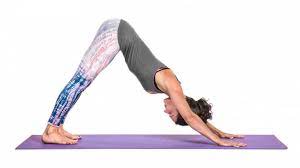
- Lying with an individual’s stomach on the floor, press into their hands as people tuck their toes under their feet and lift their heels.
- Lift the knees and hips to bring their sitting bones up toward the ceiling.
- Bend the knees slightly and lengthen the spine.
- Keep their ears in line with the upper arms or tuck the chin into the chest.
- Press firmly into the hands and keep their heels slightly lifted.
- Remain in this type of pose for up to one minute.
9. Pigeon pose
This is a hip opener that also loosens up the spine, hamstrings, and glutes. The pigeon pose can also help to stretch the sciatic nerve and quadriceps. Opening and stretching these places in the body makes it easier to correct imbalances in the posture. To do this:

- Come down on all fours with the knees below the hips and the hands a little bit in front of the shoulders.
- Bend the right knee and place it behind the right wrist with the right foot angled out to the left.
- Rest the outside of the right shin on the floor.
- Slide the left leg back, straighten the knee, and rest the thigh on the floor.
- Make sure the left leg extends straight back (and not to the side).
- Slowly lower the torso down to rest on the inner right thigh with the arms extended in front of them.
- Hold this position for up to one minute.
- Slowly release the position by walking the hands back toward the hips and lifting the torso.
- Repeat on the left side.
10. Thoracic spine rotation
This exercise relieves tightness and pain in the back while increasing stability and mobility. To do this:
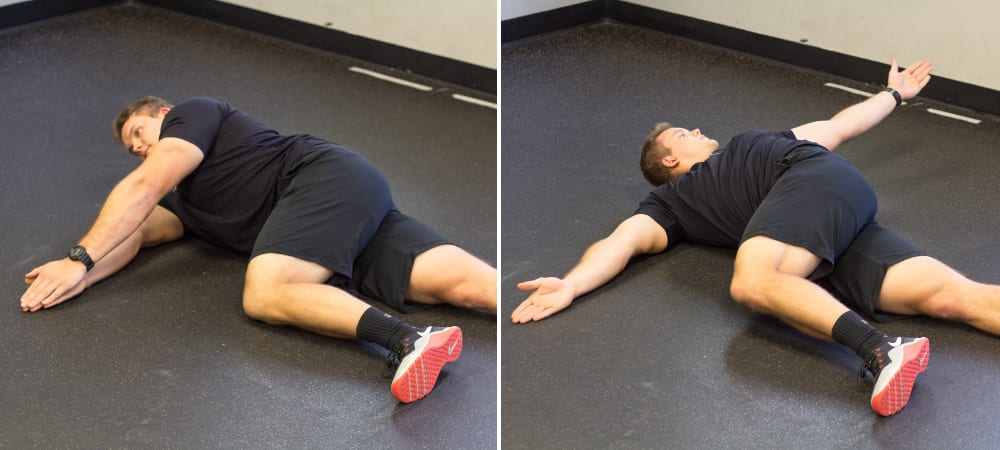
- Come onto all fours and sink the hips back down to the heels and rest on the shins.
- Place the left hand behind the head with the elbow extended to the side.
- Keep the right hand under the shoulder or bring it to the center and rest on the forearm.
- Exhale as people rotate the left elbow up toward the ceiling and stretch the front of the torso.
- Take one long inhale and exhale in this type of position.
- Release back down to the original position.
- Repeat this movement five to ten times.
- Repeat on the opposite side.
11. Glute squeezes
This exercise assists to strengthen and activate the glutes while relieving lower back pain. It also enhances the functioning and alignment of the hips and pelvis, leading to better posture. To do this:
- Lie on people’s back with the knees bent and the feet about hip-distance apart.
- Maintain the feet about a foot away from the hips.
- Rest the arms alongside the body with their palms facing down.
- Exhale as people bring the feet closer to the hips.
- Maintain this position for ten seconds and then move them further away from the hips.
- Continue this movement for one minute.
- Repeat this type of exercise a few times every day.
12. Isometric rows
This exercise helps to ease pain and stiffness from sitting in one place for too long. Isometric pulls work the shoulder, arm, and back muscles, giving them the strength to maintain good posture. To do this:
- People sit in a chair with a soft backs.
- Bend the arms so the fingers are facing forward and the palms are facing each other.
- Exhale as people draw their elbows back into the chair behind them and squeeze their shoulder blades together.
- Breathe deeply as people maintain this position for 10 seconds.
- On an inhale, slowly release to back to starting position.
- Repeat this movement for one minute.
- Repeat this exercise many times throughout the day.
Managing Posture Changes
Try these strategies to keep a good posture:
- Use a mirror to check the posture (both front and side views) throughout the day.
- Be aware of posture changes. Try to catch yourself stooping or/and leaning and take action to make corrections. Ask people to tell them if they notice them stooping.
- Change position frequently. Take movement breaks!
- Get back (or lumbar) or neck (or cervical) rolls or cushions for better postural alignment when sitting.
- Consider yoga or Tai Chi classes.
- Ask the doctor or call. A therapist can give people specific posture recommendations and exercises.
Stooped posture makes the muscles in the front of the body not more or less flexible and the muscles in the back of the body weaker. Perform simple or easy posture exercises and stretches throughout the day.
The Bottom Line
As with so many things in healthy aging, there are constant and immutable changes that happen simply because they are a normal part of the aging process. Erect posture is one of the things that is lost with age, but there are many things we can do to delay or minimize the changes in posture as our bones, muscles, and joints are altered by age. One of the keys to not slouching or hunching is to continually be mindful of posture. Set alerts on the phone to remind yourself to sit up straight and to take regular breaks so your muscles do not get stiff or tense from being in one position for too long. Along with posture checks and movement, it also assists to do regular stretches and exercises to keep the muscles strong, flexible, and better able to help people maintain good posture.
DISCLAIMER:
This article is intended or purposeful for your general informational purposes only and does not address particular circumstances. it is not a substitute for professional advice(or guidance) or help( or assistance) and should not be relied on to make decisions of any kind. A few or any actions you take upon the information presented in this article are strictly at your own risk and responsibility.
FAQs
What is a stooped posture?
Stooped posture makes the muscles in the front of the body not more or less flexible and the muscles in the back of the body weaker.
What causes a stooped posture?
Poor posture in childhood, like slouching, leaning back in chairs, and carrying heavy schoolbags, can lead to the ligaments and muscles that support the vertebrae stretching. This could pull the thoracic vertebrae out of their normal position, resulting in kyphosis.
What is bent-over posture called?
Kyphosis is a spinal condition. In people with kyphosis, the curves of the spine outward more than they should. As a result, those upper back looks overly round. The curvature can make individuals look hunched or as if they are slouching. People a few times call it “hunchback” or “round back.”
What is Kyphoscoliosis?
Kyphoscoliosis is defined as a deviation of the normal curvature of a spine in the sagittal plane and coronal plane and can include a rotation of the spinal axis. Adult scoliosis is defined as a lateral deviation of more than ten degrees in the coronal plane as measured by the Cobb angle.
Is kyphosis stooped posture?
A raised front-to-back curve of the spine is called kyphosis. Kyphosis is an exaggerated, forward rounding of an upper back. In older individuals, kyphosis is frequently due to weakness in the spinal bones that leads to them compressing or cracking.
What is Parkinson’s posture called?
A stooped posture of patients with advanced PD without camptocormia is characterized by a forward bending angle of always less than thirty degrees.
What are the 3 types of kyphosis?
There are three types of kyphosis:
Postural kyphosis. Postural kyphosis is characterized by spinal curvature of more than fifty degrees. …
Scheuermann’s kyphosis. Scheuermann’s kyphosis, or Scheurmann’s disease, is a juvenile form of kyphosis that generally affects teenagers. …
Congenital kyphosis.
How to stop stooping?
The following strategies and exercises can assist people to cut back on slouching and use good posture instead.
Stand tall. people might not pay much attention to how they stand, but it can make a big difference to their posture. …
Sit correctly. …
Move around. …
Wall slide. …
Child’s pose. …
Shoulder blade squeeze. …
Plank. …
Bridge.
What is lordosis posture?
Lordosis is the medical definition for the forward curved spine in the neck or lower back. The cervical spine (the medical name for the part of the spine in the neck) and lumbar spine (the lower back) are naturally curved a little forward, toward the front of the body.
What are the two types of kyphosis?
There are five primary types of kyphosis:
Postural Kyphosis. In young patients, it generally develops from consistently poor posture, leading to muscles being “trained” to maintain the spine in a hunched-over alignment. …
Congenital Kyphosis. …
Nutritional / Metabolic Kyphosis. …
Post-traumatic Kyphosis. …
Scheuermann’s Kyphosis.
What causes lordosis?
The Child with weak abdominal muscles tends to be more prone to lordosis. Overweight: Extra weight in the belly puts strain on the lower back and pulls it forward, raising the risk for lordosis. Trauma: Sports injuries, accidents, or serious falls can lead to spondylolysis, a type of spinal fracture.
Is kyphosis the same as Kyphoscoliosis?
Kyphosis causes the spine to curve abnormally or not normally on the sagittal plane, meaning it twists forward or backward, giving the back a rounded or hunched appearance. Someones with kyphoscoliosis have a spine that curves both to the side and forward or backward at a similar time.
What is another name for kyphosis?
Kyphosis is a spinal disorder, it is in which an excessive curve of the spine results in an abnormal rounding of the upper back. The condition is a few times known as round back or — in the case of a severe curve — as a hunchback.
What causes kyphosis in adults?
poor posture (postural kyphosis) – slouching, leaning back in chairs, and carrying heavy bags could stretch supporting muscles and ligaments, which can increase spinal curvature. abnormally shaped vertebrae (Scheuermann’s kyphosis) – if the vertebrae do not develop properly, they could end up being out of position.
What are 5 common postural deformities?
The bowlegs, knock knees, flat feet, scoliosis, lordosis, and kyphosis are all examples of deformities. Common postural deformities such as those stated above can prove to hinder daily chores; although, with proper exercises and consultation from the doctor, such postural deformities can be resolved.
What are the two types of posture on body position?
There are two types:
Dynamic posture is how people hold themselves when they are moving, like when they are walking, running, or bending over to pick up a few things.
Static posture is how people hold themselves when they are not moving, like when they are sitting, standing, or sleeping.
Can stooped posture be corrected?
If people are already showing signs of stooped posture, do not fret! This can easily be corrected by doing stretching exercises that not only strengthen the muscles but also increase flexibility. Remember, a strong back and core will help keep people upright for longer.
What is the easiest way to reduce stooping?
A few experts also suggest trying yoga or tai chi, as these exercises emphasize keeping a straight posture. Another exercise to try involves lying on their stomach and lifting their head and shoulders off of the ground for a few seconds. This will strengthen the muscles in the upper back to prevent stooping.
What exercises straighten the posture?
These Exercises to Improve the Posture
Child’s pose.
Forward fold.
Cat cow.
Standing cat cow.
Chest opener.
High plank.
Side plank.
Downward-facing dog.
What kind of problem is lordosis?
Lordosis is excessive curvature in a lumbar portion of the spine, which gives a swayback appearance. A spine is divided into many sections. The cervical vertebrae make up the neck. Thoracic vertebrae comprise a chest section and have ribs attached.
Does lordosis affect walking?
Increment of the lumbar lordosis, a frequent spinal finding in DMD (Duchenne Muscular Dystrophy), is a compensatory mechanism secondary to muscle weakness. Though, excessive lumbar lordosis may change the position of the center of mass, and lead to balance and walking difficulties.
What sleeping position is best for kyphosis?
Flat On the back. Lying on the back is considered the best sleeping position because it disperses the full weight of the body. This minimizes the number of pressure points on the back and fully supports the natural curvature of the spine.
What are the three posture and spine disorders?
What are the types of spine curvature disorders?
Lordosis/Swayback: the spine of an individual with lordosis curves significantly inward at the lower back.
Kyphosis: Characterized by an abnormally or not normally rounded upper back (more than 50 degrees of curvature).
Scoliosis: Scoliosis leads to a sideways curve in the spine.
What are some common posture problems?
Common posture problems
Forward head. Forward head posture is when the head is positioned with the ears in front of the vertical midline of the body. …
Kyphosis. Kyphosis refers to an exaggerated curvature of the upper back (the thoracic spine) where the shoulders are rounded forward. …
Swayback. …
Flatback.
What are the ill effects of stooped posture?
Seven Effects of Bad Posture
A back, Neck, and Shoulder Pain. Poor posture or slouching could lead to tension and pain in the neck, upper back, lower back, and shoulders. …
Poor Circulation. …
Impaired Lung Function. …
Poor Digestion. …
Constricted Nerves. …
Misaligned Spine. …
A Curvature of the Spine.
How do people fix stooped posture in the elderly?
Some Easy Exercises to Help Seniors Improve Their Posture
Chin Tucks and Juts. This is a great exercise people can do while sitting or standing. …
Wall Tilts. This type of exercise is great exercise for strengthening the pelvis and gluteal muscles. …
Wall Arm Circles. …
Scapular Retractions. …
Bird Dogs.
What is the difference between bending and stooping?
The kneeling – bending the legs at the knees to come to rest on the knee or knees. Stooping – bending the body forward and down while bending the spine at the waist 45 degrees or more either over a few things below waist level or down towards an object on or/and near the ground.
What do people mean by stooping?
: to bend the body or a part of the body forward and downward a few times simultaneously bending the knees. : to stand or walk with the forward inclination of the head, body, or shoulders.
What is the synonym of stooping?
See also synonyms for stooped / stooping. crouch. hunch. squat. bend.
What does a stooped posture look like?
These changes may include stooped or rounded shoulders reduced low-back curve, or forward lean of the head or whole body, making people look hunched over.
Why do people become stooped?
The backbone or vertebral column is made up of bones (named vertebrae), joint-like spaces named intervertebral discs, and muscles. Age has a pronounced effect on all three and over time a back tends to curve forward resulting in an increasingly stooped posture.
Can a stoop be corrected?
If people are already showing signs of stooped posture, do not fret! This can easily be corrected by doing stretching exercises that not only strengthen the muscles but also increase flexibility. Remember, a strong back and core will help keep people upright for longer.
What are the advantages of stooping?
Stoop Summary
Lumbar moments and compression forces may be lower. Energy expenditure and inspiratory ventilation are lower. Quadriceps fatigue is lower. More endurable over long periods of repetitive lifting.

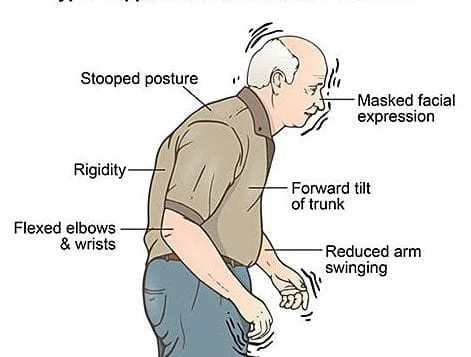

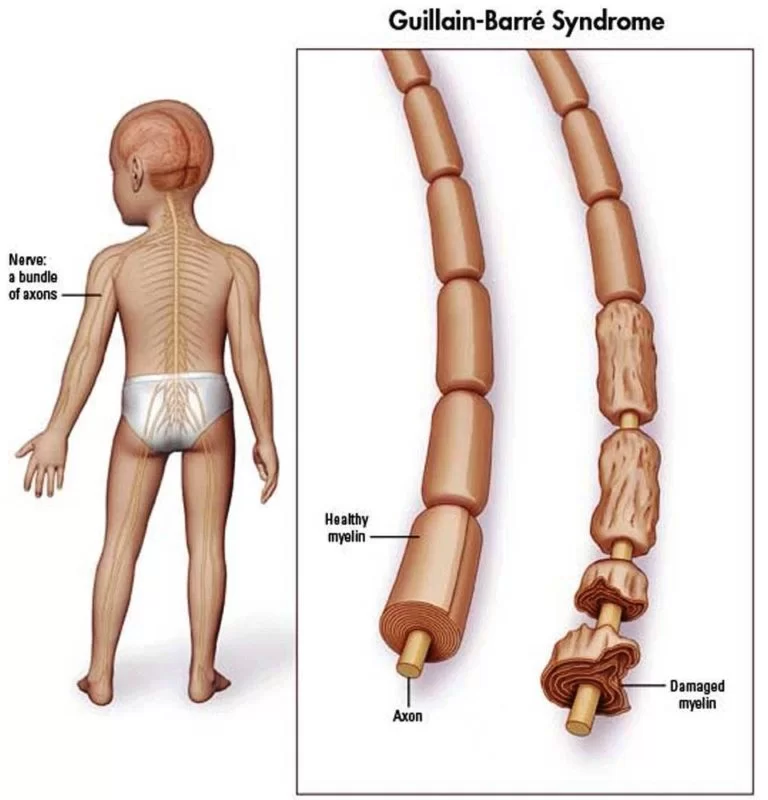
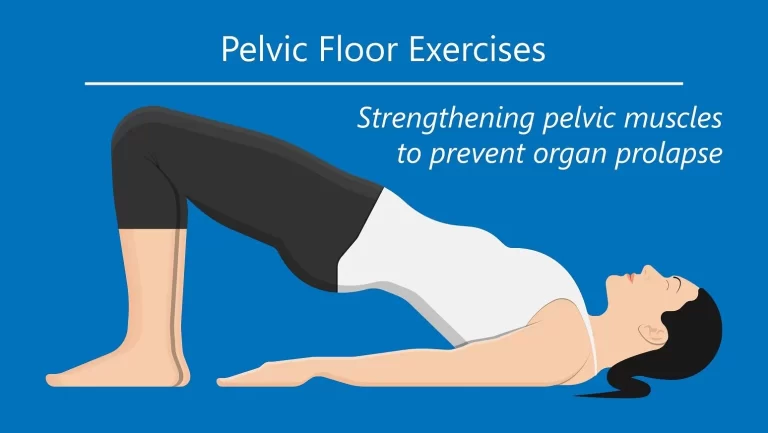
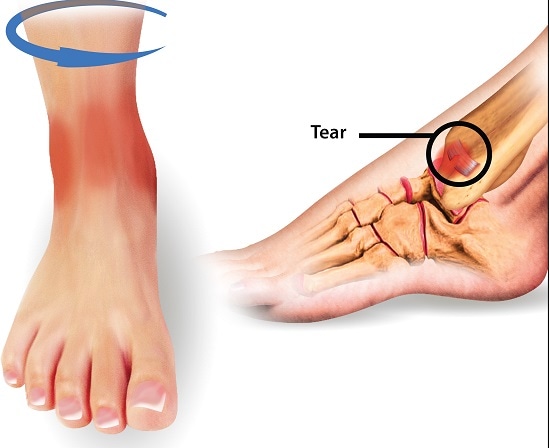
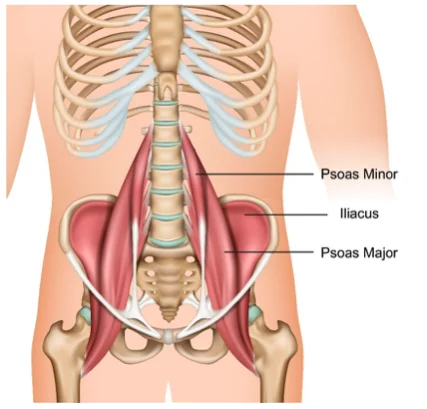
7 Comments